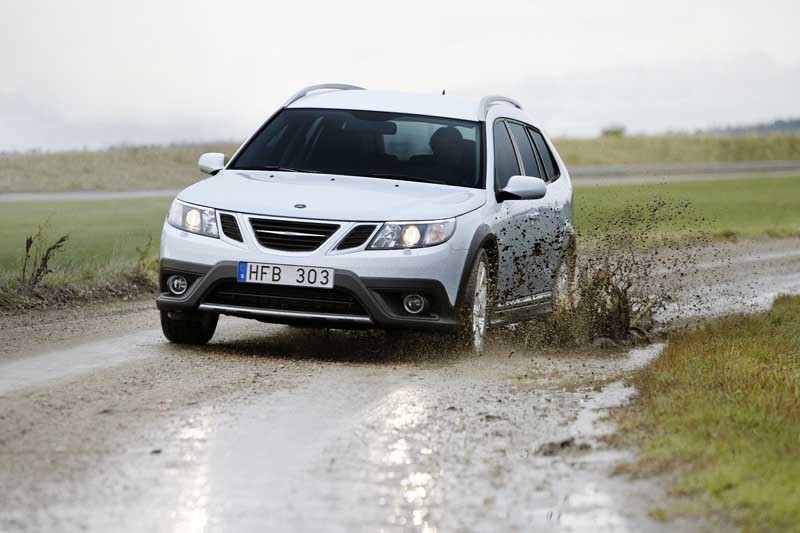Poor old Saab. The once iconic company has been passed from pillar to post over the last wee while.
After years of under-investment by former owners GM, in January it was bought by Dutch supercar manufacturer Spyker.
Despite Saab having made a loss last year and Spyker never having made a profit during its 11-year history, the supercar maker remains upbeat about the future of its new acquisition, pledging to expand its range to include a compact model, the 9-2.
I drove the 9-3X, a version of the aging 9-3 that went on sale in August last year.
It’s a rival to Subaru’s Legacy and Forester in being an estate capable of a bit of mild off-roading.
There’s four-wheel-drive (though no low range ratio I did say mild off-roading) together with plastic wheel arch protectors and scuff plates, while ride height has been increased by 35mm.
Power comes by way of a 2.0 litre, 210hp four-cylinder turbocharged petrol unit.
There’s also a 1.9 litre turbodiesel 9-3X. However, its ride height is increased by only 20mm and it comes in front-wheel-drive only, negating much of its mud-plugging capability.
The four-wheel-drive system can send up to 100% of the power to the front or rear wheels if necessary, and up to 40% of the rear axle’s power to the right or left wheel to increase traction.
The 210hp engine gets it from 0-62mph in a sprightly 8.2 seconds.
It’s a pleasant unit, smooth and quiet, with all the power you should need.
It’s not terribly economical though. Official fuel consumption is 34.6mpg, but I only got around 26-27mpg out of it.
I’d recommend the 180hp 1.9 diesel, which does 51.4mpg, but it’s only available in front wheel drive.
Inside, the cabin looks quite dated.
All of the switchgear could have come from a car that was 10 years old, although equipment levels are decent, with alloy wheels, heated front seats, dual zone climate control, and cruise control.
There’s a spacious 419 litre boot (1273 litres with rear seats folded).
Those in the front will be cosseted in comfortable seats with plenty of room, however passengers in the back will not be so happy, as legroom is poor.
Despite its slightly behind-the-times interior, it’s what the car’s made of that counts.
It’s a remarkably good cruiser, comfortable and refined.
At 70mph in sixth gear there’s nary a sound from engine, wind or wheels. As long as you can afford to put petrol in it, it eats up miles with ease.
I like Saabs. They used to be called “architect’s cars” to reflect their owners’ individualism in not plumping for a BMW or Audi.
If you can live with a cramped rear and controls that aren’t state of the art, the Saab 9-3 remains a very good car.
I wish the company all the best under Spyker.
Price: £26,5950-62mph: 8.2 seconds.Top speed: 143 mph. Economy: 34.6 mpg. CO2 emissions: 194 g/km.
